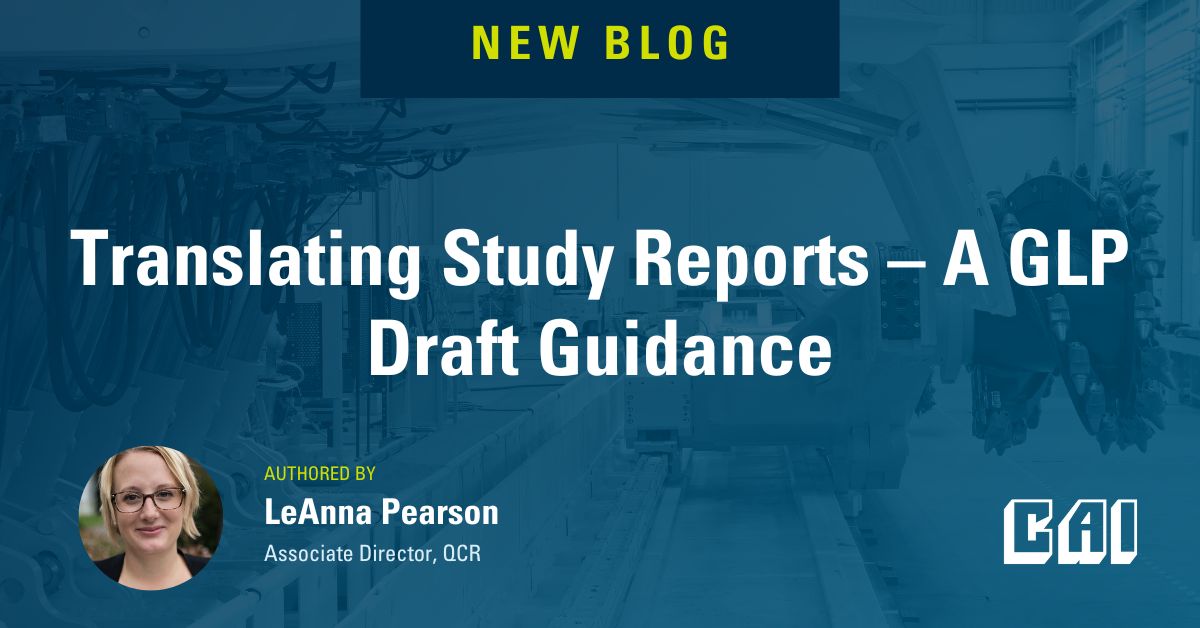
Translating Study Reports – A GLP Draft Guidance
Introduction:
In a global community, studies are often conducted by testing facilities located outside of the United States of America, including countries such as Brazil, China, India, and Japan. The final test reports and accompanying documentation require translation from the facility’s native language to English when performing the testing. All GLP (Good Laboratory Practices) studies submitted to the FDA fall under 21 CFR part 58, where the FDA defines the expectation that the translation is clear, accurate, complete, truthful, and follows written processes and procedures. This Draft Question and Answer guide published by the FDA in Nov 2023 addresses the most frequent questions and topics.
Report Expectations:
The FDA defines this as “an English language study report rendered from a GLP study that was conducted in a non-English speaking country/region where the original study report was generated in the testing facility’s native language.” This is not considered to be an amendment to the original report and is a truthful representation of the original report text, complete with any captions, footnotes, tables, and appendixes.
Report should include but are not limited to the following sections:
- Statement of Certification Requirements:
- Name of the translator(s) & their affiliation
- Translator(s) qualifications
- Date(s) the translation was performed
- Statement signed by the translator(s) attesting that the translated document is a clear, truthful, accurate, and complete representation of the original GLP study report
- This should not be an appendix but should be prior to the translated study report cover page.
- Study Report Cover Page
- Summary,
- Materials and methods,
- Results, including any charts/tables/figures
- Discussion
- Conclusions
- Appendices
Signatures required on the Translated Report:
- Typed names of the study director, Quality Assurance Auditor, Testing Facility Management
- Signature Dates from the Final Report
- Signature and Date from the Translator
Translator Expectations:
The translator of the report is required to have an education and training in English and the experience in native language translations, particularly with translating medical and scientific documents. The FDA have a full understanding that not all translations are like for like and that translating medical and scientific documents requires specialized expertise and qualification. Qualifications are included in the sections below.
Sponsor/Testing Facility Expectations
Written procedures shall be in place for the translation of studies conducted in compliance with GLP regulations. These will follow the FDA Guidelines and should be available to and followed by the translator.
Retention of the translated documents, original documents, and applicable communications shall be retained by the sponsor and/or testing facility.
A review should be conducted by a second person apart from the translator on the final version of the report to ensure completeness. The second person is not required to be fluent in scientific or medical terminology or English. Any corrections or revisions will require another completeness check, this process should be documented and retained with the study records.
Any amendment to the original final report should be translated as a separate individual document.
Takeaway
When your organization decides to conduct clinical trials and other research studies under GLP regulations as part of packages that will be submitted to the FDA, it is imperative that requirements are carefully reviewed early in the process, procedures, and training are developed and completed, and specified controls are in place to prevent the translation from becoming a roadblock to successful product approvals by FDA.
Tags: FDA, Guidance, GLP, study reports, expectations, research studies, regulations, process, procedures


